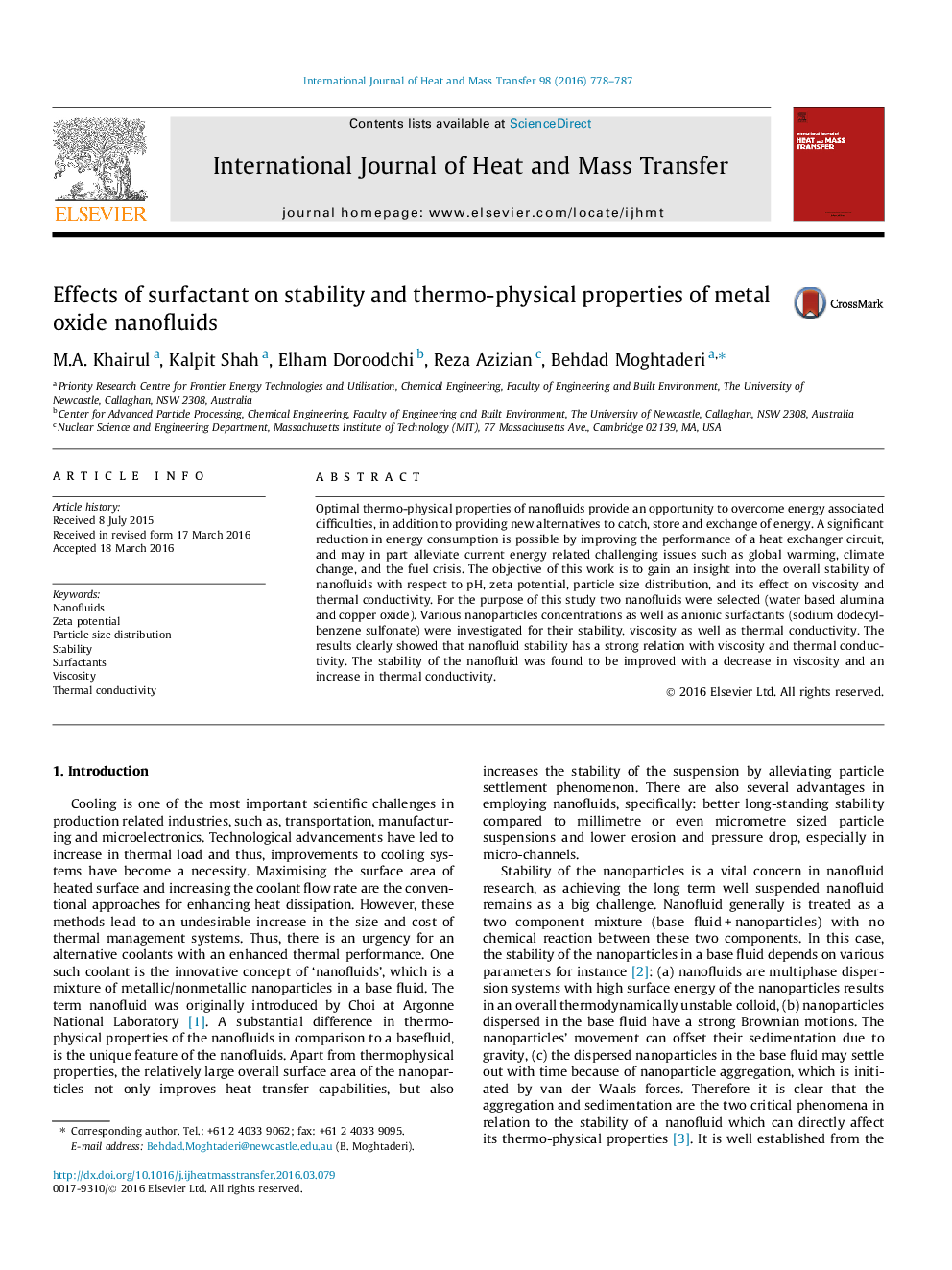| Article ID | Journal | Published Year | Pages | File Type |
|---|---|---|---|---|
| 7055702 | International Journal of Heat and Mass Transfer | 2016 | 10 Pages |
Abstract
Optimal thermo-physical properties of nanofluids provide an opportunity to overcome energy associated difficulties, in addition to providing new alternatives to catch, store and exchange of energy. A significant reduction in energy consumption is possible by improving the performance of a heat exchanger circuit, and may in part alleviate current energy related challenging issues such as global warming, climate change, and the fuel crisis. The objective of this work is to gain an insight into the overall stability of nanofluids with respect to pH, zeta potential, particle size distribution, and its effect on viscosity and thermal conductivity. For the purpose of this study two nanofluids were selected (water based alumina and copper oxide). Various nanoparticles concentrations as well as anionic surfactants (sodium dodecylbenzene sulfonate) were investigated for their stability, viscosity as well as thermal conductivity. The results clearly showed that nanofluid stability has a strong relation with viscosity and thermal conductivity. The stability of the nanofluid was found to be improved with a decrease in viscosity and an increase in thermal conductivity.
Keywords
Related Topics
Physical Sciences and Engineering
Chemical Engineering
Fluid Flow and Transfer Processes
Authors
M.A. Khairul, Kalpit Shah, Elham Doroodchi, Reza Azizian, Behdad Moghtaderi,
